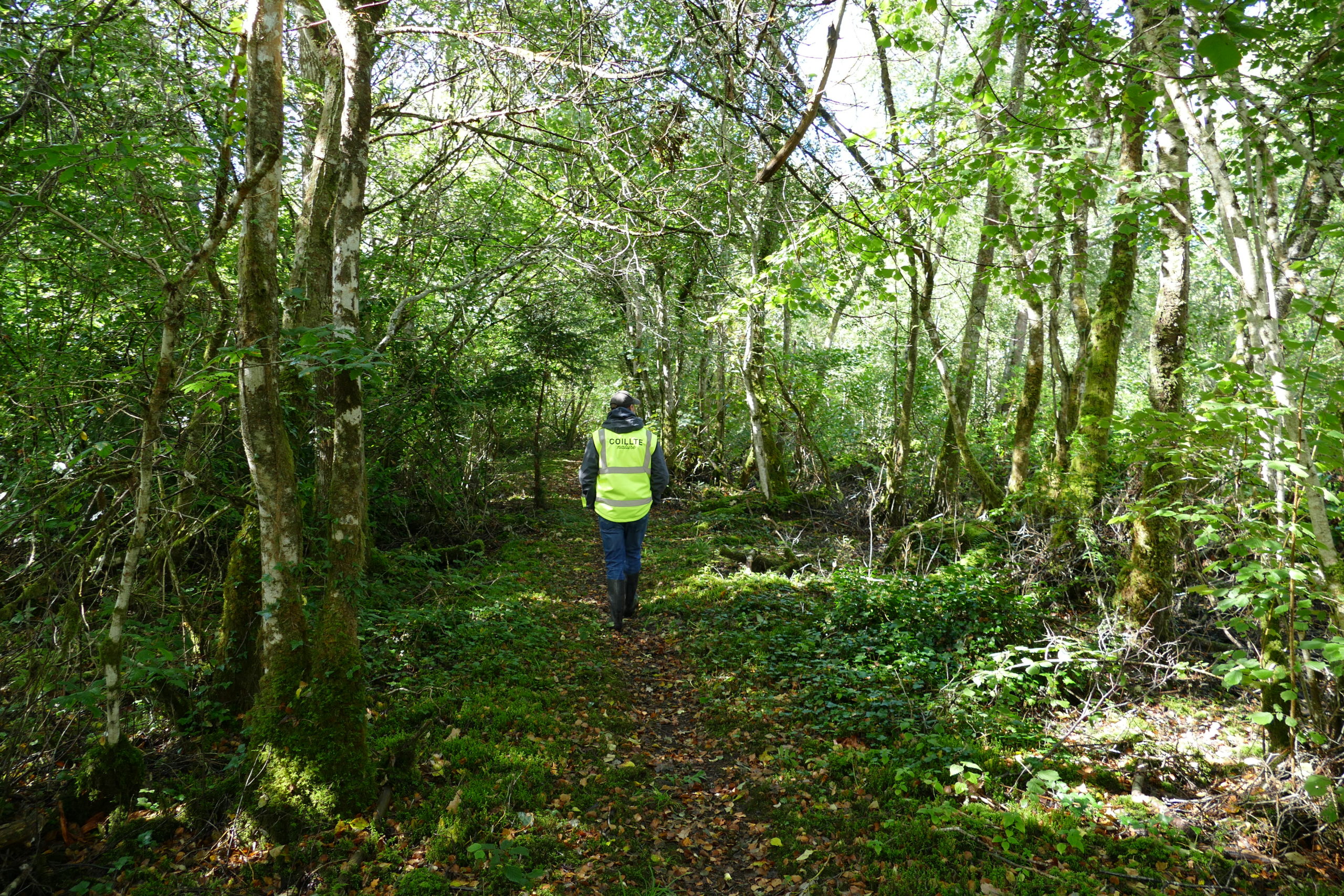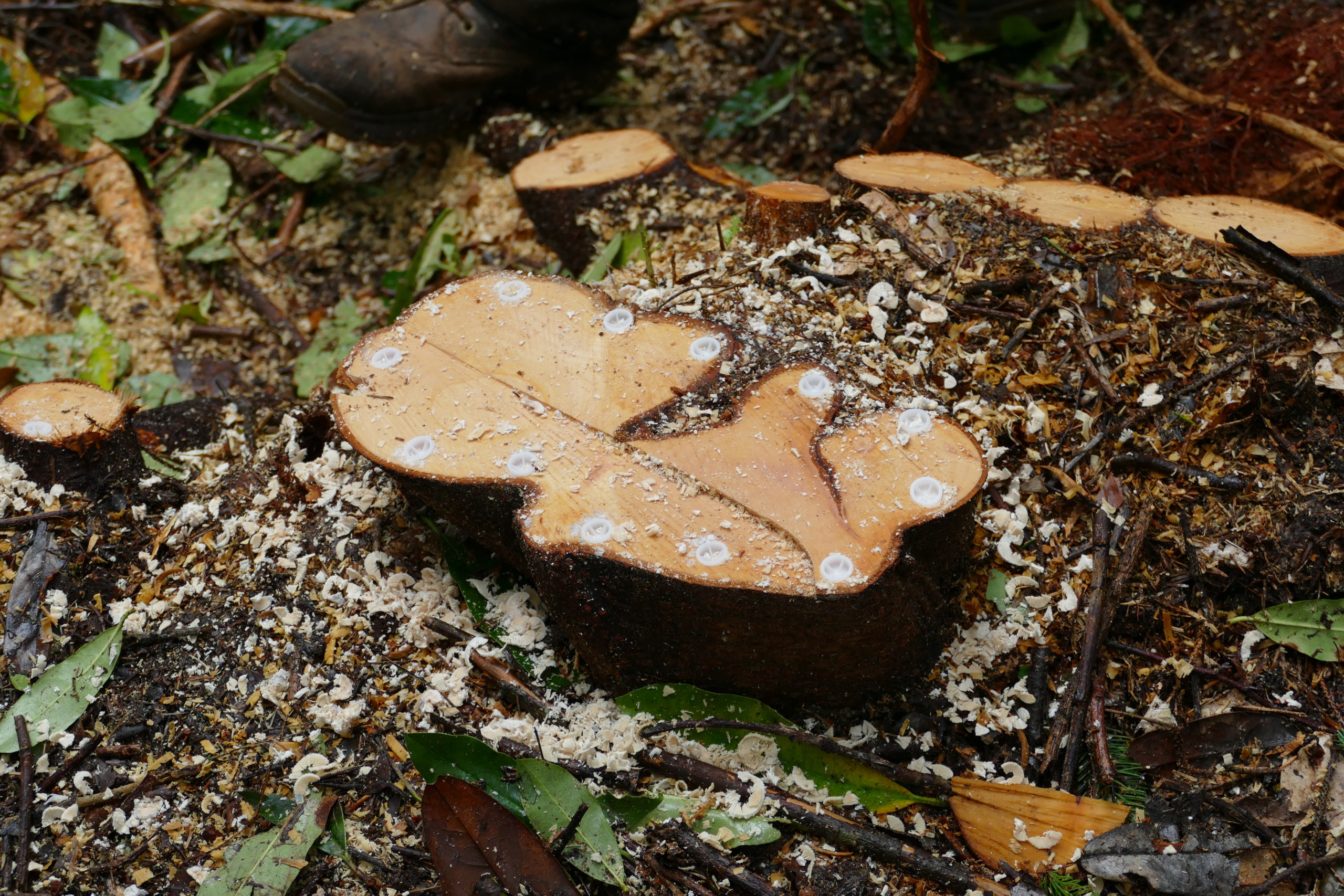Shannonside Woodland Restoration in Co. Leitrim
Two woodland sites close to the Shannon in South Leitrim have been selected as new Coillte Nature biodiversity restoration projects.
Derrycarne is a popular recreation destination on the shores of Lough Boderg and Lough Bofin on the Shannon, formerly part of Derrycarne Demense. The amenities at this scenic lakeside woodland have been recently upgraded for visitors to enjoy, including the improvement of walking trails as well as new signage and picnic benches. Beside the recreation site, additional private forestry is planted, extending the tree cover in the area.
About 75% of the Coillte property at Derrycarne is characterised as ‘old woodland’ and the whole site is within a Coillte biodiversity area. This woodland has a current BioClass score of 2 and a potential BioClass score of 1. This means that it already has a very high nature value, with potential for improvement. Under the Coillte Nature project, a management plan will be implemented to protect and enhance the area of native woodland, to tackle invasive species such as laurel and rhododendron and to increase the proportion of native species in the woodland overall. The result will be an even better recreational experience and a healthier, more vibrant woodland in the long-term.
South of the recreation area at Derrycarne, the Coillte property extends out along a narrow peninsula into Lough Bofin which is not easily accessed by foot. This is covered in a special type of woodland known as ‘alluvial woodland’, or more simply put, this is a woodland which naturally floods regularly. Alluvial woodlands are under increasing threat in Europe, mainly from drainage, development and pollution. The alluvial woodland is also found along the lake shore in the recreation area of Derrycarne.
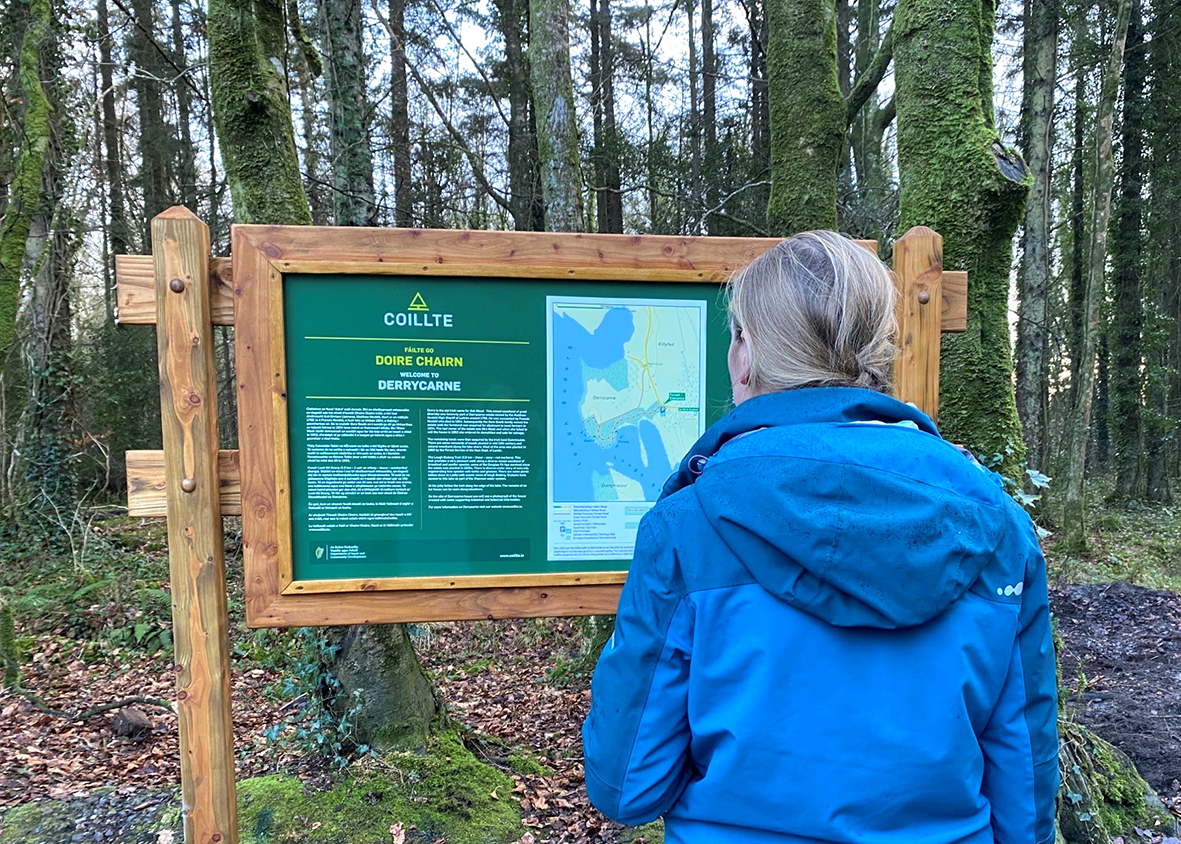
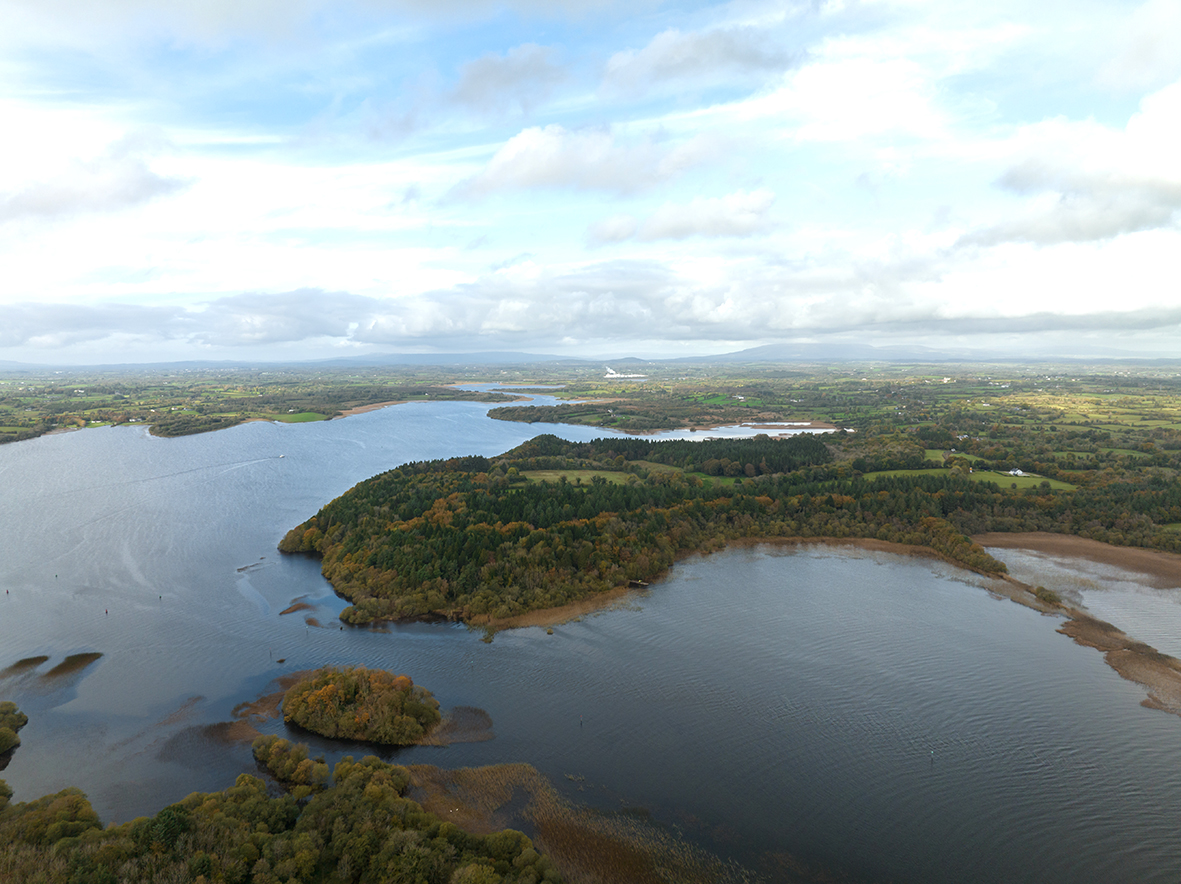
This wet woodland environment provides a home for many plant and animal species which have adapted to live in this type of environment. According to the National Survey of Native Woodlands, the southern part of the Derrycarne property is considered the top alluvial woodland site in Leitrim. At the centre of the peninsula lies a stand of mature spruce trees which were planted over fifty years ago and are starting to blow over. As part of the project, these conifers will be removed and replaced with a mix of native Irish trees and shrubs such as willow, birch and alder, complementing the existing wet woodland and enhancing the habitat for many bird and animal species.
Not far from Derrycarne, a forest at Cornagillagh close to Roosky is being converted to native woodland.
Cornagillagh Forest lies between the N4 the Sligo-Dublin railway line and is currently a mix of conifer plantation and mixed woodland including many native tree and shrub species. Part of this site is classified as ‘old woodland’ and there are records of broadleaf high forest here on maps dating from 1830s. This site is also within a Coillte biodiversity area with a current BioClass score of 2 and a potential BioClass score of 1.
The area of mature conifer plantation will be felled and converted to native forest on a phased basis. An area of 5.6ha (about 14 acres) was felled in late 2022 and is being replanted with native species including Scots pine, oak, birch, hazel, spindle and cherry, with willow and a small amount of alder added in areas more suited to a wet woodland. Control of invasive rhododendron will also take place.
The wood lies adjacent to a relatively large intact raised bog, Aghnamona Bog, which is a National Heritage Area (NHA), and much of this Coillte property is within the NHA. Some areas close to the raised bog will be left unplanted to develop naturally into a mosaic of open ground and bog woodland. A small section of the Coillte site on the southern perimeter adjacent to the raised bog has deep peat soils. This part of the site will be restored to peatland rather than being planted with native woodland as raised bog is a valuable habitat in its own right.
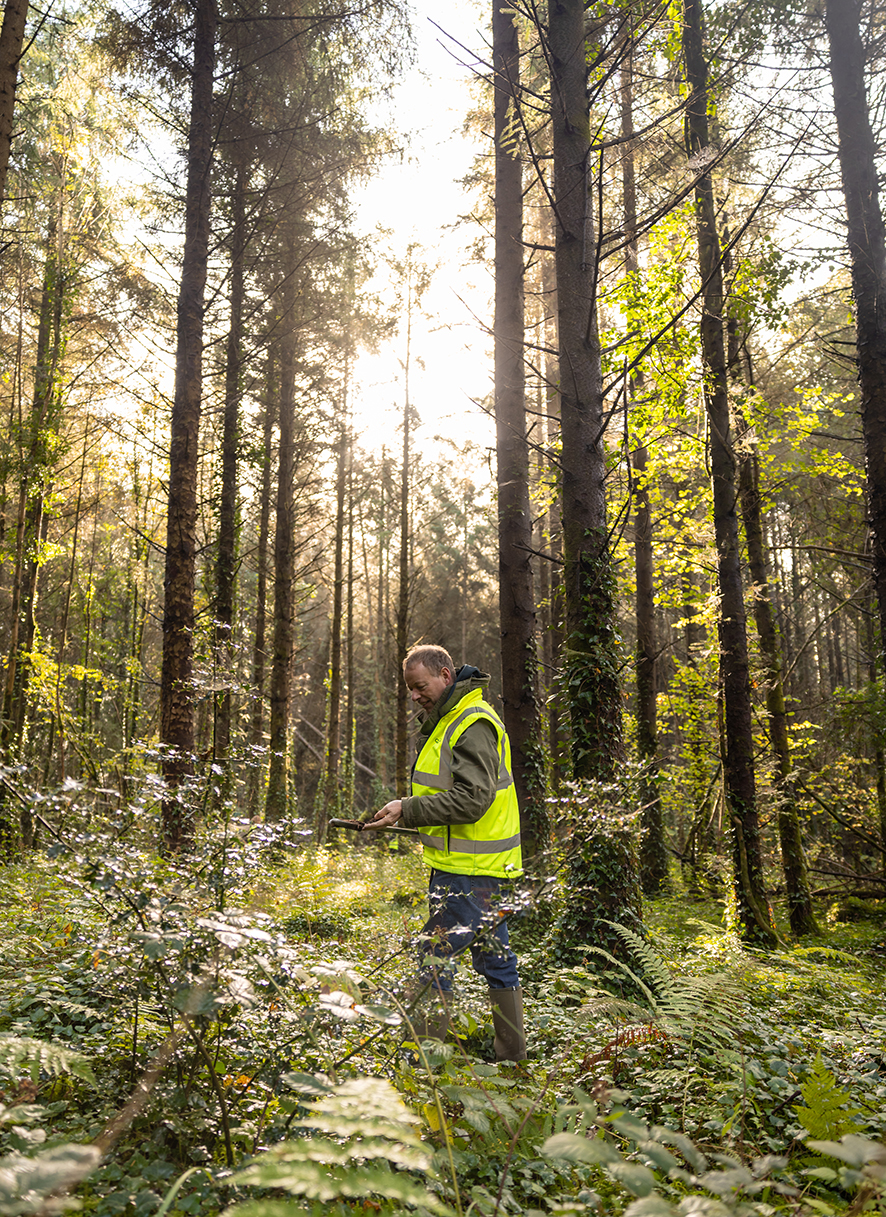
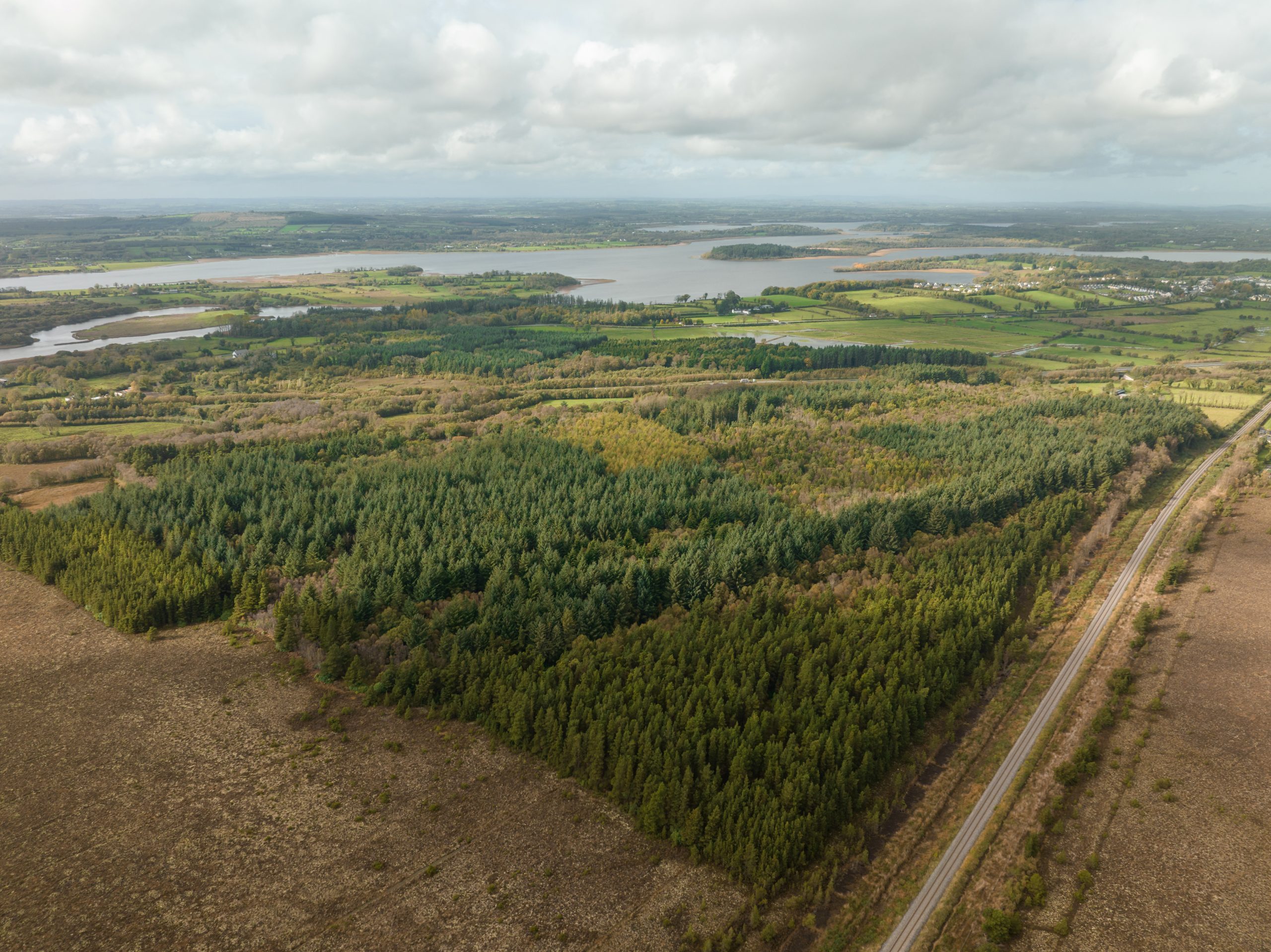
The bog restoration will involve removing the mature pine and spruce, and blocking drains which were dug at the time these conifers were planted over fifty years ago. This restoration work will improve the health of the overall raised bog area as it will increase the ability of the peatland to retain water.
It is expected that in time, mosses and other plants typically found on raised bog will return, creating a habitat even more welcoming to peatland pollinators such as butterflies, dragonflies and damselflies, as well as bird and animal species.
In time, this site at Cornagillagh will be a diverse native woodland transitioning into raised bog, providing a range of natural habitats, as well as a beautiful natural amenity for the local community to enjoy.
The Coillte Nature team are interested to link in with local communities close to Derrycarne and Cornagillagh woods regarding these projects. If you are interested to find out more or if you have local knowledge about this area that may be beneficial to these projects please email coilltenature@coillte.ie
